 KENTUCKY BARNS
KENTUCKY BARNS  KENTUCKY BARNS Agricultural Heritage of the BluegrassCAROL PEACHEEForeword by Mary BerryIntroduction by Janie-Rice Brother QUARRY BOOKS An imprint of INDIANA UNIVERSITY PRESS This book is a publication of QUARRY BOOKS an imprint of Indiana University Press Office of Scholarly Publishing Herman B Wells Library 350 1320 East 10th Street Bloomington, Indiana 47405 USA iupress.indiana.edu 2019 by Carol Peachee All rights reserved No part of this book may be reproduced or utilized in any form or by any means, electronic or mechanical, including photocopying and recording, or by any information storage and retrieval system, without permission in writing from the publisher. This book is printed on acid-free paper. Manufactured in China Library of Congress Cataloging-in-Publication Data Names: Peachee, Carol, photographer. Title: Kentucky barns : agricultural heritage of the bluegrass / Carol Peachee ; foreword by Mary Berry ; introduction by Janie-Rice Brother. Description: Bloomington, Indiana : Quarry Books, [2019] | Includes index. paper) Subjects: LCSH: BarnsKentuckyPictorial works. | Vernacular architectureKentuckyPictorial works. | Architectural photography. | Architectural photography.
KENTUCKY BARNS Agricultural Heritage of the BluegrassCAROL PEACHEEForeword by Mary BerryIntroduction by Janie-Rice Brother QUARRY BOOKS An imprint of INDIANA UNIVERSITY PRESS This book is a publication of QUARRY BOOKS an imprint of Indiana University Press Office of Scholarly Publishing Herman B Wells Library 350 1320 East 10th Street Bloomington, Indiana 47405 USA iupress.indiana.edu 2019 by Carol Peachee All rights reserved No part of this book may be reproduced or utilized in any form or by any means, electronic or mechanical, including photocopying and recording, or by any information storage and retrieval system, without permission in writing from the publisher. This book is printed on acid-free paper. Manufactured in China Library of Congress Cataloging-in-Publication Data Names: Peachee, Carol, photographer. Title: Kentucky barns : agricultural heritage of the bluegrass / Carol Peachee ; foreword by Mary Berry ; introduction by Janie-Rice Brother. Description: Bloomington, Indiana : Quarry Books, [2019] | Includes index. paper) Subjects: LCSH: BarnsKentuckyPictorial works. | Vernacular architectureKentuckyPictorial works. | Architectural photography. | Architectural photography.
Classification: LCC NA8230 (ebook) | LCC NA8230 .P432 2019 (print) | DDC 725/.37209769dc23 LC record available at https://lccn.loc.gov/2018061357 1 2 3 4 5 24 23 22 21 20 19 
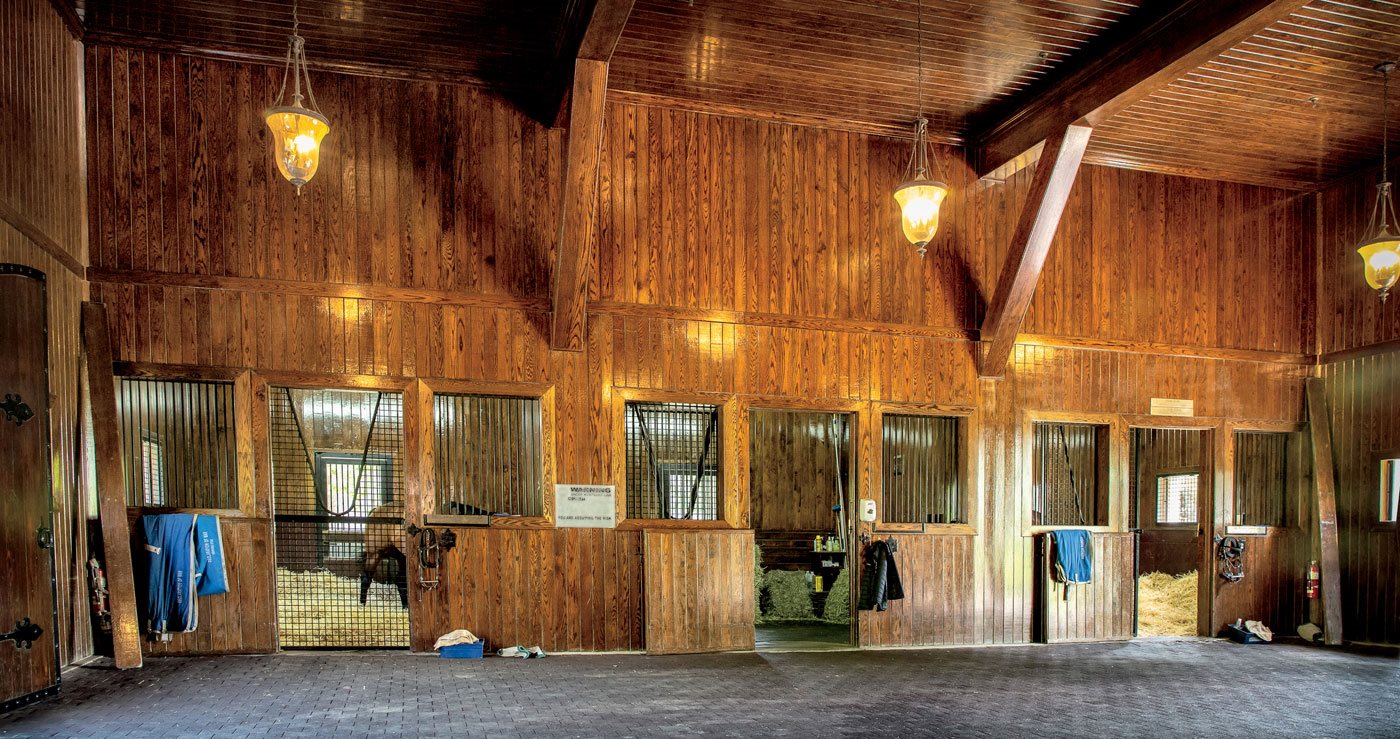 For Monica
For Monica Contentsby Mary Berryby Janie-Rice Brotherby CountyForeword MARY BERRY I have lived and farmed in Henry County, Kentucky, all of my lifefirst by birth and then by choice. The country that I grew up in was populated by people who lived by farming. The agriculture in Henry County had diminished a good deal between my father Wendell Berrys childhood and my own, but it was still highly diversified and supported the communities and small towns in our county. Peoples pride was in their homes, and it showed. I grew up working on the same farms and in the same barns as my father. This is more than nostalgia.
Contentsby Mary Berryby Janie-Rice Brotherby CountyForeword MARY BERRY I have lived and farmed in Henry County, Kentucky, all of my lifefirst by birth and then by choice. The country that I grew up in was populated by people who lived by farming. The agriculture in Henry County had diminished a good deal between my father Wendell Berrys childhood and my own, but it was still highly diversified and supported the communities and small towns in our county. Peoples pride was in their homes, and it showed. I grew up working on the same farms and in the same barns as my father. This is more than nostalgia.
There was the seamless passing down of the essential knowledge of good work and good land use. My children grew up in this culture. I remember thinking that the kind of work my children were doing would be recognizable to seven generations of the farming family that came before them. My youngest daughter is now in her late twenties, and that culture is almost completely gone, along with the farming people and the farmland that had survived until the late nineties. The farmers who are left are dependent on the toxic and erosive grain economy. There isnt a town in Henry County that is not dead or dying.
As I look back now, the first sign of this decay was the barns. Farmers didnt need them anymore, or they couldnt afford to fix them. Carol Peachees excellent photographs of barns in Kentucky are a tribute to our agrarian past. Her work has given me a welcome opportunity to recall my memories of the barns I played in while growing up and then worked in later. The barns I knew and loved as a child were primarily stock barns and tobacco barns. The work we did there was quiet enough for talk.
Much of our conversation was for the benefit of the young people just learning their place in the long lineage of agrarian people. I speak now of the culture of agriculture, which modern industrial agriculture has disrupted with the idea that machines can replace people and that particular places are the same as all places. And the result has been the displacement of millions of people from the countryside to the cities, political discord, and the now pervasive idea that technology will get us out of our dependence on the natural world and our need for each other. This is an important book and one that I hope will serve not as a collection of ornaments and relics but as a testament to the accomplishments of a people who are firmly placed in a country they know well and who are not in constant economic trouble. This is what we need againa healthy, prosperous rural landscape dotted with well-kept barns. There has not been a time in Kentuckys past when some people and some land were not misused, and that must be kept in mind so that we can do better.
When many of the barns pictured in this book were built, there was the possibility that a healthy farm culture might flourish. We have barely the sad remnants of that now. But we still have some of the barns and some of the people. My father asked this critical question in The Unsettling of America forty years ago, and in my work at the Berry Center, I continue his questioning: Are we or are we not going to take care of our land, our country? These photographs remind us of the capacity of the human imagination when it accepts the necessary limits of form and function. The result is beautiful. 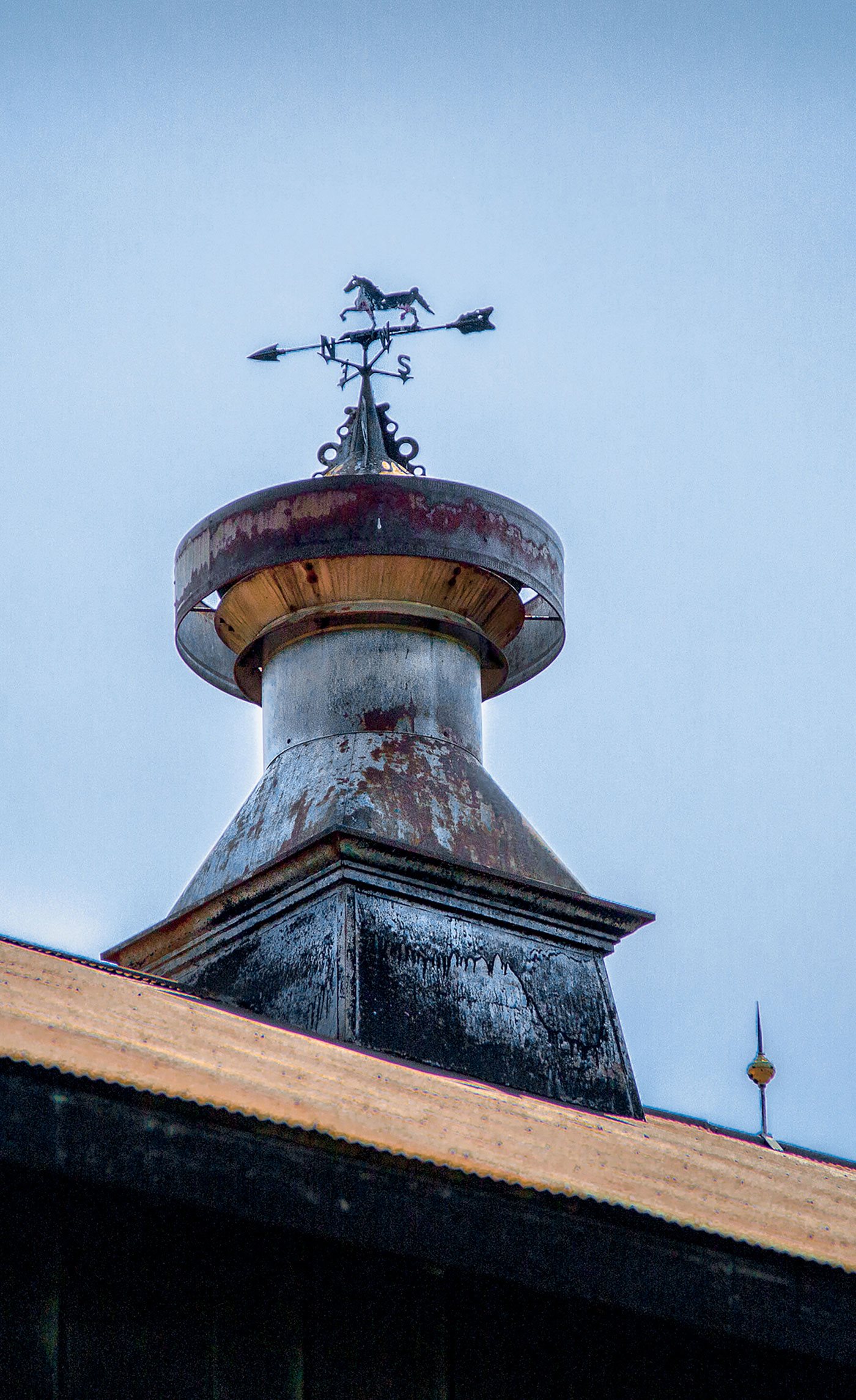 Acknowledgments To undertake a project like photographing barns statewide in Kentucky is impossible without the expertise, knowledge, and connections of many, many people.
Acknowledgments To undertake a project like photographing barns statewide in Kentucky is impossible without the expertise, knowledge, and connections of many, many people.
I want to thank all the people who took time out of their days to drive me around, stand and talk with me, meet with me while I asked questions, and endure my ignorance. There are too many to name, and yet this network of people was incredibly generous and valuable to me. There are some folks who gave an inordinate amount of attention to this project and to whom I am deeply indebted. First, thank you to Amy Sparrow Potts, who patiently improved my simplistic understanding of barns and helped me formulate what I wanted this project to be about. For their help during my research efforts, I want to offer my gratitude to Marty Perry and the Kentucky Heritage Council folks, who endured my rustling and disorganized searching through their records; to Bill McIntire, who came out of KHC retirement to meet with me and make some suggestions regarding sources and barns; and to Danae Peckler, the National Barn Alliance past president, who was helpful in directing my attention and providing me with an important network. Many thanks to Tom Eblen at the Lexington Herald, who was invaluable in getting the word out to barn owners by writing an article on my search for barns.
For her help during the actual photographing, thank you to my friend Sarah Tate, who drove me through old stomping grounds of hers to locate barns; to Dan Thomas in Trigg County, near Cadiz, who walked me through his dark fired tobacco barn, regaling me with great stories; Jerry Zwahlen, who drove me around and provided me with amazing historic details of the Swiss settlement of Ottenheim; and Michael Enzweiler and Whitey Heeb, who unselfishly introduced me to community members and drove me to significant barns in their community of Camp Springs. I also want to offer enormous thanks to Ag extension agent Matt Futrell, who took an entire day out of his workweek to drive me around Christian and Caldwell Counties, looking for traditional wooden dark fired tobacco barns that were still active. And thanks to Keenan Bishop, another of Kentuckys fine Ag extension agents, who also spent the better part of a day driving me around to significant barns in Franklin and Owen Counties. Thank you also to Orloff Miller, who drove me through northern Kentucky counties and introduced me to vanished towns and historic barns while giving me an archaeologists perspective. I am deeply in debt to Eddie Gilkison, my go-to guy for Clark, Montgomery, Bourbon, and Fayette Counties; he is a fount of knowledge about farming practices, farming history, and great barns. I also owe heartfelt thanks to Janie-Rice Brother for her organizational skills, driving ability, historic and architectural knowledge, connections, vast network of cousins, and especially for her willingness to be up to her neck in this.
Next page



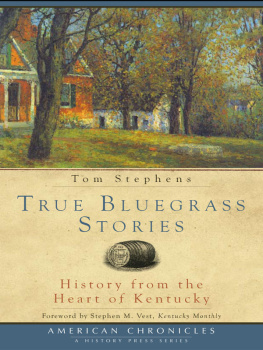
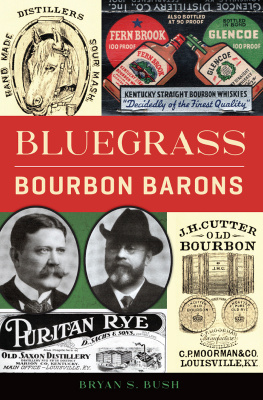
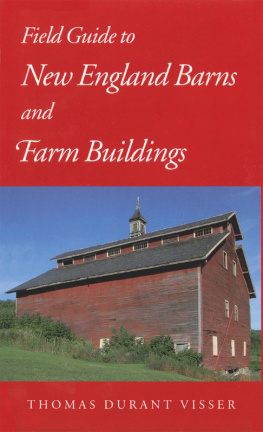


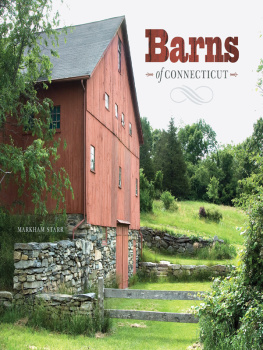

 KENTUCKY BARNS
KENTUCKY BARNS  KENTUCKY BARNS Agricultural Heritage of the BluegrassCAROL PEACHEEForeword by Mary BerryIntroduction by Janie-Rice Brother QUARRY BOOKS An imprint of INDIANA UNIVERSITY PRESS This book is a publication of QUARRY BOOKS an imprint of Indiana University Press Office of Scholarly Publishing Herman B Wells Library 350 1320 East 10th Street Bloomington, Indiana 47405 USA iupress.indiana.edu 2019 by Carol Peachee All rights reserved No part of this book may be reproduced or utilized in any form or by any means, electronic or mechanical, including photocopying and recording, or by any information storage and retrieval system, without permission in writing from the publisher. This book is printed on acid-free paper. Manufactured in China Library of Congress Cataloging-in-Publication Data Names: Peachee, Carol, photographer. Title: Kentucky barns : agricultural heritage of the bluegrass / Carol Peachee ; foreword by Mary Berry ; introduction by Janie-Rice Brother. Description: Bloomington, Indiana : Quarry Books, [2019] | Includes index. paper) Subjects: LCSH: BarnsKentuckyPictorial works. | Vernacular architectureKentuckyPictorial works. | Architectural photography. | Architectural photography.
KENTUCKY BARNS Agricultural Heritage of the BluegrassCAROL PEACHEEForeword by Mary BerryIntroduction by Janie-Rice Brother QUARRY BOOKS An imprint of INDIANA UNIVERSITY PRESS This book is a publication of QUARRY BOOKS an imprint of Indiana University Press Office of Scholarly Publishing Herman B Wells Library 350 1320 East 10th Street Bloomington, Indiana 47405 USA iupress.indiana.edu 2019 by Carol Peachee All rights reserved No part of this book may be reproduced or utilized in any form or by any means, electronic or mechanical, including photocopying and recording, or by any information storage and retrieval system, without permission in writing from the publisher. This book is printed on acid-free paper. Manufactured in China Library of Congress Cataloging-in-Publication Data Names: Peachee, Carol, photographer. Title: Kentucky barns : agricultural heritage of the bluegrass / Carol Peachee ; foreword by Mary Berry ; introduction by Janie-Rice Brother. Description: Bloomington, Indiana : Quarry Books, [2019] | Includes index. paper) Subjects: LCSH: BarnsKentuckyPictorial works. | Vernacular architectureKentuckyPictorial works. | Architectural photography. | Architectural photography.
 For Monica
For Monica Contentsby Mary Berryby Janie-Rice Brotherby CountyForeword MARY BERRY I have lived and farmed in Henry County, Kentucky, all of my lifefirst by birth and then by choice. The country that I grew up in was populated by people who lived by farming. The agriculture in Henry County had diminished a good deal between my father Wendell Berrys childhood and my own, but it was still highly diversified and supported the communities and small towns in our county. Peoples pride was in their homes, and it showed. I grew up working on the same farms and in the same barns as my father. This is more than nostalgia.
Contentsby Mary Berryby Janie-Rice Brotherby CountyForeword MARY BERRY I have lived and farmed in Henry County, Kentucky, all of my lifefirst by birth and then by choice. The country that I grew up in was populated by people who lived by farming. The agriculture in Henry County had diminished a good deal between my father Wendell Berrys childhood and my own, but it was still highly diversified and supported the communities and small towns in our county. Peoples pride was in their homes, and it showed. I grew up working on the same farms and in the same barns as my father. This is more than nostalgia. Acknowledgments To undertake a project like photographing barns statewide in Kentucky is impossible without the expertise, knowledge, and connections of many, many people.
Acknowledgments To undertake a project like photographing barns statewide in Kentucky is impossible without the expertise, knowledge, and connections of many, many people.